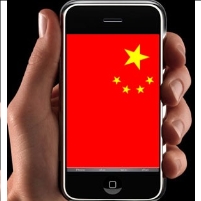Apple the Jobs Creator…Outside the U.S.
Monday, January 30, 2012

As Apple, Inc. enters its first full year without founder Steve Jobs at the helm, expect one thing not to change: Apple will not be creating large numbers of jobs in the U.S. In fact Apple, which until 2004 did a lot of manufacturing in the U.S., employs just 43,000 people in the U.S. It employs 20,000 people in China. However, the vast majority of the 700,000 contract workers who toil in factories making iPhones, iPads and other Apple products are located outside the United States, mostly in China.
According to The New York Times, it would cost Apple an extra $65 per iPhone to use American workers. Since the profit margin on the product is so great, Apple could easily absorb the added expense. However, when President Barack Obama met with Silicon Valley executives a year ago, Steve Jobs told him that the bigger obstacle to bringing manufacturing jobs back to the United States was the lack of qualified industrial engineers needed to oversee assembly-line workers. Chinese schools turn these out by the thousands, while the U.S. has failed to keep up with the demand for skilled technical workers who have more than a high school degree, but less than a college degree.
Another reason for the shift to China that Apple’s defenders like to cite is the existence of vast networks of suppliers, known as “supply chains,” in China that are able to quickly and cheaply provide needed parts and make design changes on the fly. Thus in 2007, just weeks before the release of the first iPhone, CEO Jobs demanded that the screens be changed from plastic to scratch-proof glass, which was accomplished at a factory in Shenzhen, China, owned by Foxconn Technologies. According to Apple executives, the effort culminated with factory managers rousing workers from their dormitory beds in the middle of the night to begin production, causing one Apple exec to gush that “The speed and flexibility [was] breathtaking.”
Yet a closer look at Foxconn, which produces an estimated 40% of the world’s consumer electronics, raises serious questions about the role of cheap and oppressed labor in creating that “flexibility” making Apple (and other tech companies) so profitable. The factory at Shenzhen, for example, requires its workers to live in dormitories, and Chinese workers are not allowed to organize independent labor unions. An investigation in 2006 found that Foxconn workers were being paid $50 a month to work 15 hours a day six days a week and Foxconn security guards have been videotaped beating workers.
In 2011, Apple admitted that child labor conditions at its factories have also worsened. In addition, the Foxconn factory in Shenzhen has seen a stream of worker suicides over the years, and one wonders if the “breathtaking” flexibility that rouses workers from their sleep has something to do with these deaths. After all, one person’s flexibility is another’s lost night of sleep.
-Matt Bewig, David Wallechinsky
How the U.S. Lost Out on iPhone Work (by Charles Duhigg and Keith Bradsher, New York Times)
Innovation and Job Creation in a Global Economy: The Case of Apple’s iPod (by Greg Linden, Jason Dedrick and Kenneth Kraemer, Journal of International Commerceand Economics) (pdf)
Chinese Workers Poisoned Making iPhones (by Noel Brinkerhoff, AllGov)
Sweatshop Conditions at IPod Factory Reported (by Mike Musgrove, Washington Post)
- Top Stories
- Unusual News
- Where is the Money Going?
- Controversies
- U.S. and the World
- Appointments and Resignations
- Latest News
- Musk and Trump Fire Members of Congress
- Trump Calls for Violent Street Demonstrations Against Himself
- Trump Changes Name of Republican Party
- The 2024 Election By the Numbers
- Bashar al-Assad—The Fall of a Rabid AntiSemite






Comments